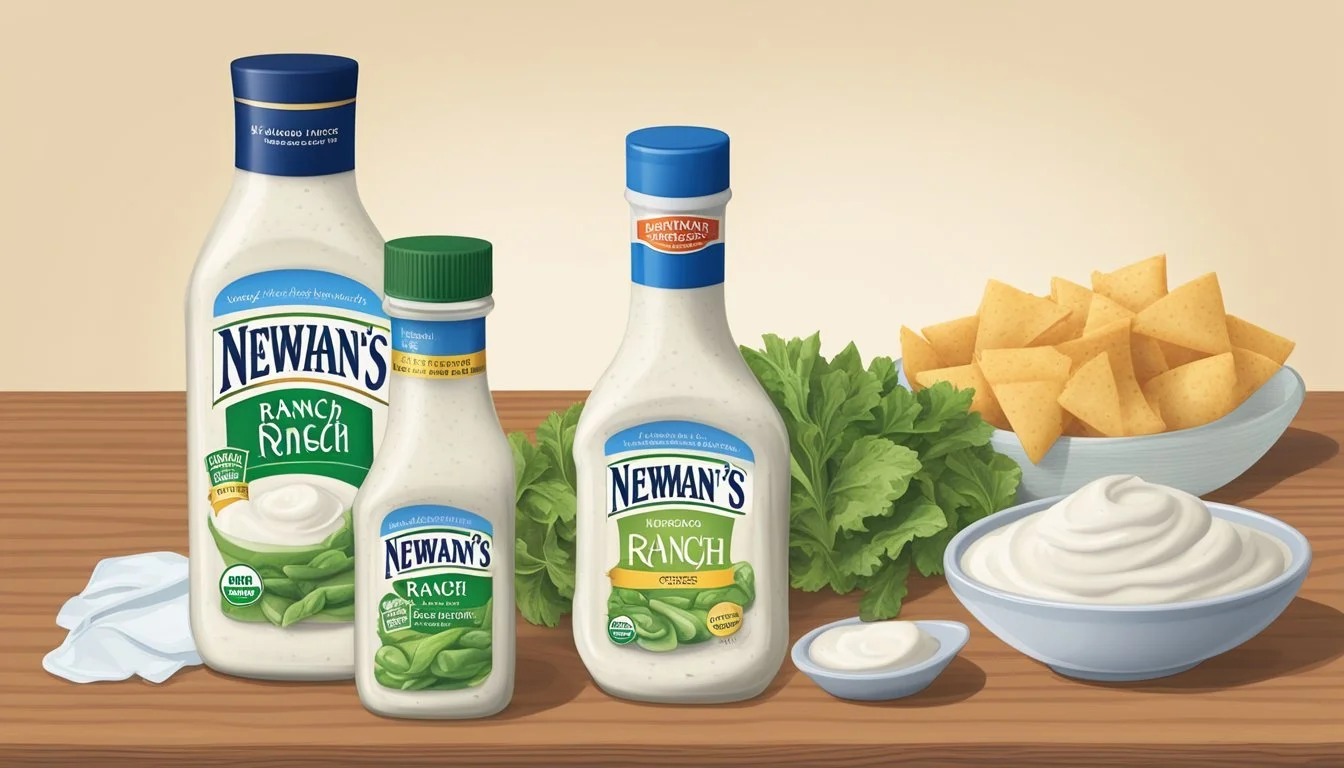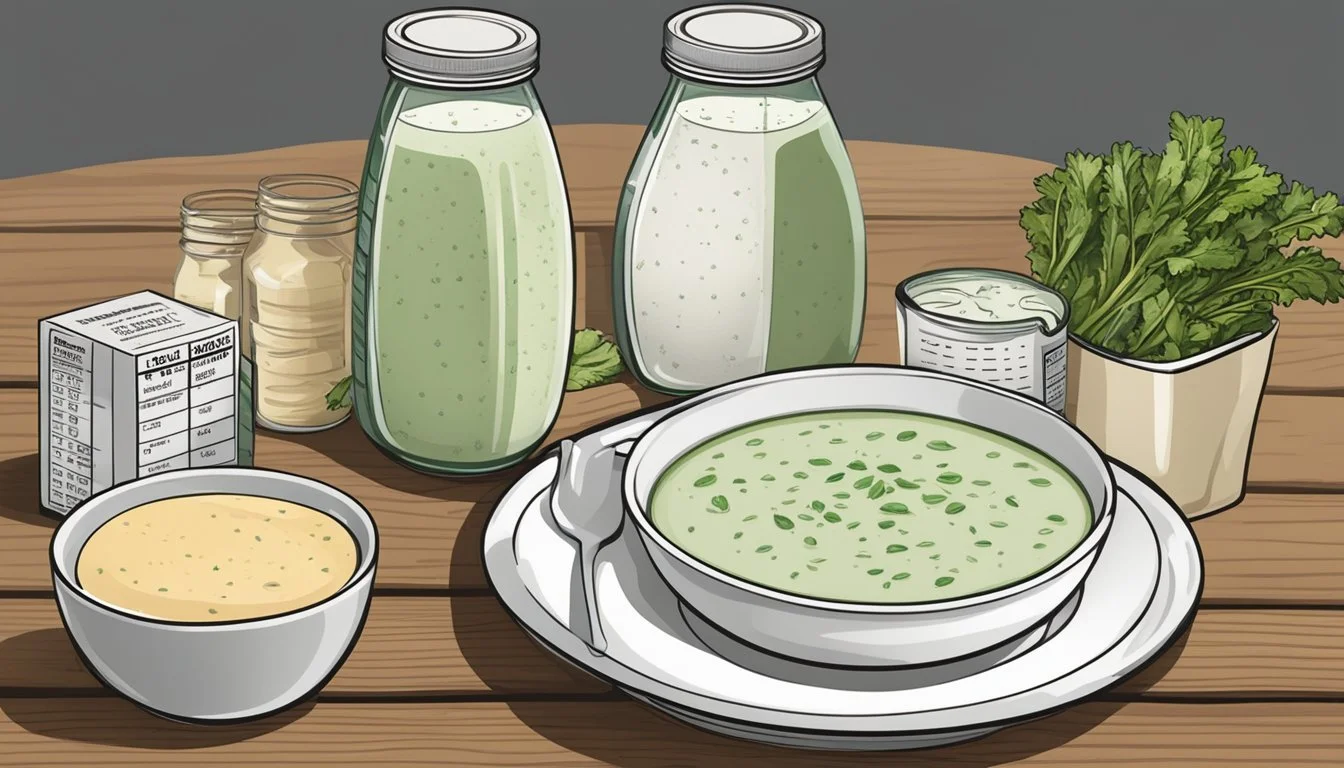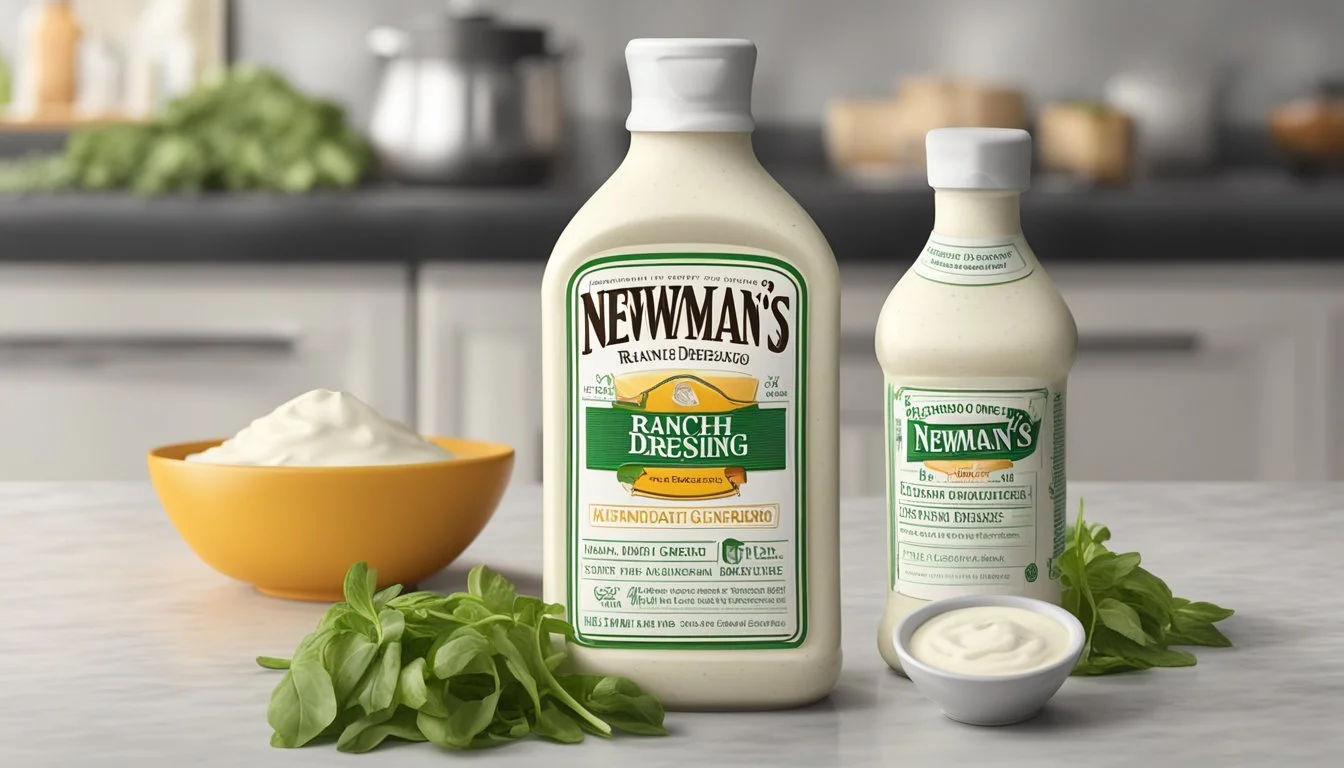How Much Newman's Own Ranch Dressing Per Day Is Excessive
Understanding Limits
When incorporating ranch dressing into a balanced diet, moderation is key, no matter the brand. With its creamy texture and blend of herbs, Newman's Own Ranch dressing provides a flavor that complements a variety of foods. While it's known for its taste, consumers should be mindful of their intake due to the caloric and fat content typically associated with ranch dressings.
The consumption of Newman's Own Ranch dressing, like any other condiment, should align with dietary guidelines and personal health goals. The dressing contains calories, fat, and sodium, which, when consumed excessively, can contribute to various health issues, including weight gain and increased blood pressure. It is important to consider these nutritional factors when determining how much ranch dressing is too much for an individual's daily intake.
Nutritional Facts and Health Implications
When considering how much Newman's Own Ranch dressing to consume, it's critical to assess its nutritional content and the potential health implications of its ingredients.
Caloric Content and Serving Size
A typical serving size of Newman's Own Ranch dressing is 2 tablespoons (30g), containing approximately 130 calories. These calories mainly come from fats and considering that the average daily caloric intake should be around 2000 calories for most adults, this dressing should be used in moderation as part of a balanced diet.
Fat Composition
The total fat content in a 2 tablespoon serving is 14 grams, which is 18% of the daily value. This includes 1 gram of saturated fat and 0g of trans fat. A high intake of saturated fat can lead to health issues such as heart disease; thus, consumers should be cautious about their ranch dressing intake.
Sodium Levels
The sodium content in ranch dressing can be substantial. One serving of Newman's Own Ranch dressing has a sodium level that contributes to the daily recommended intake, and excessive sodium consumption can lead to hypertension and cardiovascular concerns.
Sugars and Additives
Ranch dressing often contains added sugars and additives for flavor, which might include sweeteners like high fructose corn syrup. While precise information on sugars and additives is not detailed here, these components can impact blood sugar levels and caloric intake.
Proteins and Other Nutrients
In terms of protein, a single serving of the ranch dressing has a minimal amount, with about 0.4 grams of protein. As for other nutrients, the dressing may contain trace amounts of calcium, potassium, and iron, but it is not a significant source of these. Consumers relying on ranch dressing for nutritional value should be mindful that while it can enhance flavor, it does not contribute substantially to daily nutrient requirements.
Ingredient Analysis
In analyzing the ingredients of Newman's Own Ranch Dressing, one should consider the composition and potential dietary impact. This includes examining the main components, artificial additives, and any allergens present.
Main Ingredients Overview
Newman's Own Ranch Dressing typically contains buttermilk, which provides a creamy base. Garlic, onion, and parsley are often included for flavor. The ingredients together create the dressing's distinctive ranch taste. These elements are combined with a mix of spices and natural flavor to enhance the taste profile.
Buttermilk: Often the primary ingredient in ranch dressing, providing a tangy flavor and creamy texture.
Garlic and Onion: Adds depth to the flavor profile.
Parsley: Gives a mild herby taste.
Artificial Additives
As for stabilizers and thickeners, Newman's Own Ranch Dressing may contain xanthan gum, a common food additive used to maintain the texture of the dressing. Mustard flour may function as both a flavoring and a thickening agent. Additionally, lactic acid is employed to preserve the dressing's freshness and to add a distinctively slight sour taste.
Xanthan Gum: Works as a stabilizer in the dressing.
Lactic Acid: Preserves freshness and adds tartness.
Allergens Information
Certain ingredients in Newman's Own Ranch Dressing can be allergenic to some consumers. It commonly includes milk and whole egg as foundational ingredients, both of which are known allergens.
Milk: It is vital to note for those with lactose intolerance or milk allergies.
Eggs: Also considered a major allergen and should be avoided by anyone with allergies to eggs.
Ranch Dressing Varieties and Comparisons
When examining ranch dressings, it's essential to consider flavor profiles and ingredients, as well as how store-bought varieties like Newman's Own compare to other brands in taste tests. Health-conscious consumers also often seek organic or lighter alternatives.
Comparison to Other Brands
Newman's Own Ranch Dressing is typically pitched against other popular brands like Hidden Valley, Kraft, and Wish-Bone in consumer comparisons. These brands display a range of flavor variations and ingredient compositions, making the choice a matter of personal preference.
Hidden Valley: Known for being rich and herby.
Kraft: Often described as creamy with a pronounced tang.
Wish-Bone: Recognized for its peppery and floral notes.
Newman's Own, while not detailed in terms of flavor here, is reputed for contributing to charitable causes, which is a value addition beyond taste and nutritional content.
Taste Test Evaluations
Taste tests are commonly conducted to evaluate which store-bought ranch dressings come closest to the coveted restaurant-style flavor.
Hidden Valley: Frequently cited as the best classic ranch.
Bolthouse Farms: Positioned as a healthier choice without sacrificing flavor.
Kraft: Known for its versatility and widespread appeal.
Newman's Own, similar to these brands, aims for a balance between authentic ranch flavor and a profile that appeals to a broad consumer base.
Healthier Alternatives
The demand for healthier ranch dressings has led to the rise of organic and lite options from various manufacturers.
Organic Alternates: Typically made with organic ingredients, offering a cleaner label.
Lite Alternates: Provide fewer calories and lower fat content compared to traditional recipes.
For example, Bolthouse Farms offers a version made with yogurt, providing fewer calories and a healthier profile without compromising on the creamy, rich flavor ranch is known for. This trend is embraced by consumers looking for healthier yet flavorful salad dressing options.
Usage and Serving Suggestions
When enjoying Newman's Own Ranch Dressing, adhering to serving suggestions can help maintain a balanced diet. The dressing can be versatile, complementing a variety of dishes beyond the typical salad.
Traditional Uses in Meals
Traditionally, ranch dressing is used to enhance the flavors of a simple salad, providing a creamy texture and a tangy taste. A single serving size is typically 2 tablespoons. It serves not only as a dressing but also as a favorite dipping sauce for veggies, adding a burst of flavor to raw snack options.
Salad Dressing: Drizzle 2 tablespoons over a fresh garden salad.
Veggie Dip: Use it as a dip for a colorful platter of raw vegetables, such as carrots, celery, and bell peppers.
Creative Culinary Ideas
Chefs and home cooks alike have leveraged ranch dressing for creative culinary uses. It can be used as a seasoning for potato dishes or even as a marinade for meats, offering a nuanced flavor profile to various cuisines.
Seasoning for Potatoes: Mix into mashed potatoes or toss with potatoes before roasting.
Marinade for Meats: Marinate chicken or pork in ranch dressing before grilling for added moisture and flavor.
By keeping the serving size in check, Newman's Own Ranch Dressing can be a delightful addition to a meal, both in traditional and inventive ways.
Consumer Guidance and Product Availability
As consumers consider incorporating Newman's Own Ranch dressing into their diets, it is crucial to understand the product's affordability and where it can be procured. This section provides guidance on price considerations and purchasing locations to make informed choices during grocery shopping.
Price and Affordability
Newman's Own Ranch dressing is positioned as an affordable yet high-quality dressing option. The cost per bottle may vary depending on the retailer, but it is generally known for being cost-effective, making it an accessible choice for those looking to add flavor to their meals without stretching their grocery budget. Additionally, sales and discounts may occur at certain supermarkets or grocery stores, further enhancing its affordability.
Purchasing Locations
Consumers can find Newman's Own Ranch dressing at various retail outlets, including supermarkets and grocery stores. Specific establishments such as Whole Foods Market stock the product, ensuring availability for those who prefer shopping at health-oriented stores. For added convenience, Newman's Own Ranch dressing can also be purchased online through services like Instacart, offering curbside pickup or delivery, which can save time and potentially money with available first-order promotions.
Brand Analysis and Reputation
Newman's Own has established a respectable market position through its commitment to quality and philanthropy. This section assesses the brand's market presence and how its charitable contributions bolster its reputation.
Market Position of Newman's Own
Newman's Own maintains a competitive stance in the market with its array of products, including ranch dressing, which often features in taste tests. While its ranch dressing has received mixed reviews, with some criticism for a lackluster flavor profile, Newman's Own continues to be a choice for regular purchases due to the brand's reliability and broader product appeal.
Philanthropic Efforts of Newman's Own
The brand is renowned for its corporate responsibility and significant charitable contributions. Newman's Own donates 100% of profits to charity, underlying the company's philanthropic stance and contributing positively to its brand reputation. These efforts not only resonate with consumers who are increasingly looking to support socially responsible companies but also set a precedent in the food industry for corporate giving.
Safety and Regulatory Standards
When consuming Newman's Own ranch dressing, or any food product, adherence to safety and regulatory standards set by governing bodies, such as the FDA, ensures the consumer's health and safety.
Compliance with Food Safety
Newman's Own ranch dressing is subject to the Federal Food, Drug, and Cosmetic Act (FD&C Act), which is enforced by the Food and Drug Administration (FDA). Under these regulations, the company must follow established safety standards for manufacturing processes to ensure the dressing is safe for consumption. This includes quality control measures to prevent contamination and to maintain the product quality throughout its shelf life. It is crucial that these products are stored according to the storage instructions on the label to maintain safety and quality.
Labeling and Expiry Information
The FDA mandates strict product labeling to inform consumers about the contents of their food. Newman's Own ranch dressing label provides detailed information including ingredients, nutritional facts, and expiration dates. Consumers must adhere to the expiration dates on the packaging. These dates indicate the time limit for optimal quality, recommended as follows:
"Best if Used By/Before" date suggests when the product will be of best flavor or quality.
"Use By" date is the last date recommended for the use of the product while at peak quality.
Following these guidelines helps ensure that consumers experience the product as intended and avoid potential food safety risks.
Conclusion
When it comes to incorporating Newman's Own Ranch Dressing into one's diet, moderation is key. This popular dressing contains approximately 310 calories per serving, with a significant amount of fat and sodium. Individuals should consider these nutritional factors in the context of their overall daily caloric and nutrient intake.
A balanced diet typically includes a variety of foods from all food groups in appropriate proportions. If ranch dressing is consumed, it should be done sparingly, complementing a meal rather than being the focal point. Health professionals generally recommend limiting high-calorie condiments to maintain a healthy weight and promote cardiovascular health.
Here is a quick reference guide on consuming Newman's Own Ranch Dressing:
Calories: Aim to consume a portion that aligns with your daily caloric needs.
Frequency: Consider limiting to occasional use to avoid excessive calorie, fat, and sodium intake.
Portion Size: Stick to recommended serving sizes as outlined by nutritional labels.
For those concerned about caloric and fat content, exploring lower-calorie or reduced-fat alternatives may be beneficial, as well as using the dressing as a dip rather than a pour-over to better control portion sizes. As always, individuals should consult with healthcare providers or nutritionists to determine what is best for their specific dietary needs.










